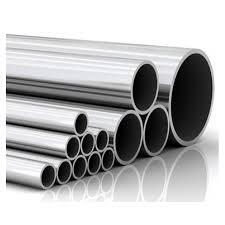Stainless steel’s unique properties make it a material of choice for many industries, but understanding its cost structure is crucial for effective budgeting. This blog delves into the factors that influence the Stainless Steel price per kg, offering insights into how these factors can impact your overall expenses and providing strategies to manage these costs.
Factors Influencing Stainless Steel Price Per Kg
- Grade Specifications: Stainless steel comes in various grades, each suited for different applications and price points. Stainless Steel 304 is a widely used grade known for its balanced performance and lower price per kg. In contrast, Stainless Steel 316, which offers enhanced corrosion resistance and temperature stability, generally commands a higher price. Selecting the appropriate grade based on your specific needs can help optimize costs.
- Raw Material Price Fluctuations: The cost of stainless steel is directly linked to the prices of its raw materials, such as nickel and chromium. These prices can fluctuate due to global market conditions, supply chain disruptions, or changes in production levels. Monitoring these raw material costs can provide valuable insights into potential changes in the Stainless Steel price per kg.
- Production Techniques: The complexity of stainless steel manufacturing impacts its cost. Basic products with minimal processing are usually less expensive. However, products that require advanced manufacturing techniques, such as custom fabrication or special treatments, will have a higher price per kg. Understanding the production requirements for your project can help in budgeting more accurately.
- Supply Chain Dynamics: The interplay between supply and demand affects stainless steel pricing. During periods of high demand, such as industrial booms or construction surges, prices may rise. Conversely, when there is an oversupply or during economic downturns, prices may decrease. Keeping abreast of supply chain trends can help you make strategic purchasing decisions.
- Supplier Considerations: The location and efficiency of suppliers can impact the Stainless Steel price per kg. Suppliers closer to raw material sources or those with efficient manufacturing processes might offer better pricing. Additionally, regional factors and transportation costs can influence pricing. Evaluating suppliers based on both cost and service quality is essential for optimizing your budget.
- Market Trends and Economic Factors: Economic conditions, including inflation rates, currency fluctuations, and global trade policies, also affect the Stainless Steel price per kg. For example, a strong currency might make imports cheaper, while inflation could increase raw material costs. Staying informed about economic trends and global market conditions can help in anticipating price changes and adjusting your purchasing strategy.
- Regulatory and Environmental Factors: Regulations related to environmental protection and production standards can impact stainless steel costs. Compliance with stricter environmental regulations or changes in safety standards can lead to higher production costs, which may be reflected in the price per kg. Understanding these regulatory impacts can help in budgeting for potential cost increases.
Typical Stainless Steel Prices Per Kg
Here’s an overview of typical pricing for different grades of stainless steel:
- Stainless Steel 304: Generally ranges from $2 to $3 per kg. This grade is popular for its versatility and affordability.
- Stainless Steel 316: Typically costs between $3 and $4 per kg. Known for its superior resistance to corrosion and heat, it is a premium option.
- Stainless Steel 430: Usually priced around $1.5 to $2.5 per kg. This grade is more cost-effective and suitable for applications with less demanding corrosion resistance requirements.
These prices can vary based on order size, processing needs, and market conditions.
Benefits of Stainless Steel
Despite its cost, stainless steel offers numerous advantages:
- Durability: Stainless steel is known for its strength and long-lasting performance, which reduces the frequency of replacements.
- Corrosion Resistance: Its resistance to rust and corrosion makes it ideal for use in harsh environments.
- Low Maintenance: Its easy-to-clean surface minimizes maintenance efforts and costs.
- Modern Appearance: Stainless steel’s sleek, contemporary look enhances both functional and decorative applications.
Strategies to Manage Stainless Steel Costs
- Request Multiple Quotes: Obtain quotes from several suppliers to compare the Stainless Steel price per kg and secure the best deal.
- Consider Bulk Purchasing: Buying larger quantities can lead to lower per kg prices due to bulk discounts.
- Negotiate Terms: Engage with suppliers to negotiate pricing, especially for larger orders, to potentially achieve better rates.
- Track Market Trends: Stay informed about raw material prices and market trends to make timely and informed purchasing decisions.
Conclusion
Understanding the factors that influence the Stainless Steel price per kg is crucial for managing your budget effectively. By considering grade specifications, raw material costs, production techniques, supply chain dynamics, and supplier factors, you can make informed decisions that help optimize expenses. Implementing strategies such as comparing quotes, buying in bulk, negotiating prices, and monitoring market trends will ensure that you get the best value for your investment in stainless steel .







